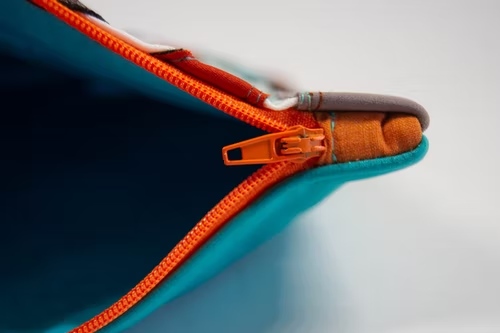
Although you’ve used zippers all your life, you probably only care about their functionality when they break. Few people are even aware of the fascinating history of the zipper, much less how it operates. For more details on this classic example of engineering, continue reading.
Definition Of Zipper
1. A fastener consisting of a row of metal or plastic teeth on two straps used to connect the edges of an opening (such as the mouth of a garment or bag), and a slider that pulls the two rows of teeth into an interlocking position to close the opening ;
2. a chain that is fastened to something to tighten, stabilize, or guide it—for example, an object that will be lifted or dropped.
History Of The Zipper
The first closure that might have served as a model for the zipper was granted a patent in 1851. “Automatic, Continuous Closure” was how it was described.” Elias Howe, the inventor, chose not to market it. Howe’s invention, the “Clasp Locker,” was marketed by Whitcomb Judson in 1895. Gideon Sundback was granted a patent in 1917 for the “Separable Fastener,” but it never gained popularity.” The B referred to this tool as a “zipper.” Sundback’s creation was adopted as a closure for their new rubber boots by the F. Goodrich Company. Pouches containing tobacco were also sealed with it. The zipper didn’t start to take off in the fashion world until 1937.

The Parts Of A Zipper
You should be familiar with the components of zippers in order to comprehend how they operate. While not all zippers are the same, they frequently share some elements. A zipper has the following components:
- The track consists of teeth or coils that interlock
- The slider body separates and joins the teeth together
- The pull tab that allows you to use the slider
- The top and bottom stop prevents the zipper from coming apart at each end
- The tape, which is the fabric to which the teeth are attached
The Mechanics
On each side of a zipper, there are two rows of teeth that face one another. Each tooth has a hook, and because they are spaced apart, they connect sequentially as they are drawn toward one another. The hooks enter those hollow spaces to close a zipper. The slide portion of the zipper has wedges that push the hooks and hollows together at specific angles to close it. For this to happen, each tooth and hollow must be the same size and shape. The pull must be pushed against the hooks in the opposite direction to release the teeth and unzip the closure. What prevents the zipper pull from completely slipping off the tracks of teeth are the stops at each end of the zipper.
Types Of Zippers
There are many different styles and dimensions of zippers. Larger, heavier-duty zippers are less likely to break than thin, more fragile ones. You have a wide range of options when it comes to zipper materials, but the most common ones are molded plastic, metal, and nylon coil. Depending on what it is attached to, the type of zipper you use will vary. Stopping is necessary for backpacks but not for a jacket, for example. Typical types of zippers include:
- Closed-end zippers
- Separating zippers
- Two-way separating zippers
- Invisible zippers
Ways To Fix A Stuck Zipper
There are a lot of different methods you can use to unstick a zipper, including the following ones:
1. Use a graphite pencil. Start with a graphite pencil to free a stuck zipper. In an effort to bring the zipper down, run the pencil’s tip along the teeth of the closed zipper.
2. Use bar soap or wax. To make the teeth slide through more easily, try using a lubricant like a bar of soap, some chapstick, or lip balm.
3. Use petroleum jelly. You can use petroleum jelly if all else fails. To make it simpler to free the stuck zipper, apply a small amount of petroleum jelly to the zipper teeth using the tip of your finger. If the jelly is not properly removed, it may leave a greasy stain if the zipper is attached to a fabric item.
